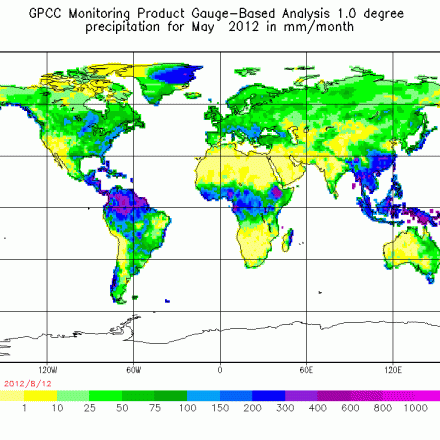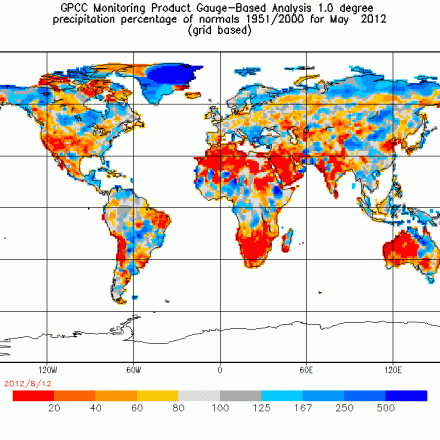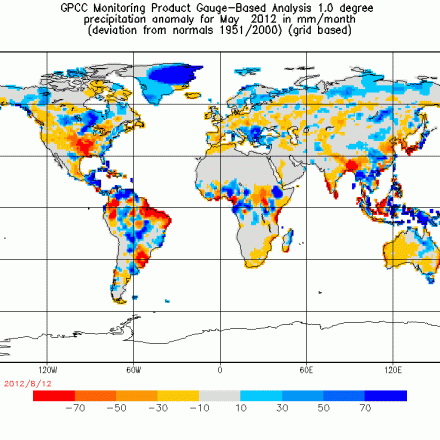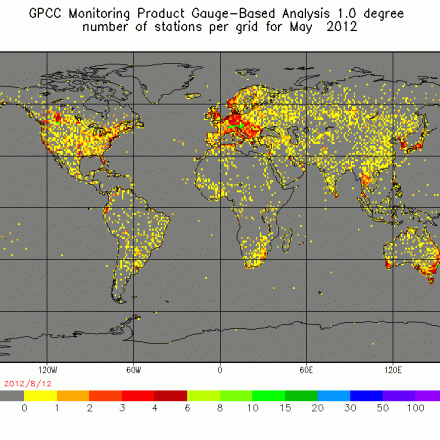GPCC: Global Precipitation Climatology Centre
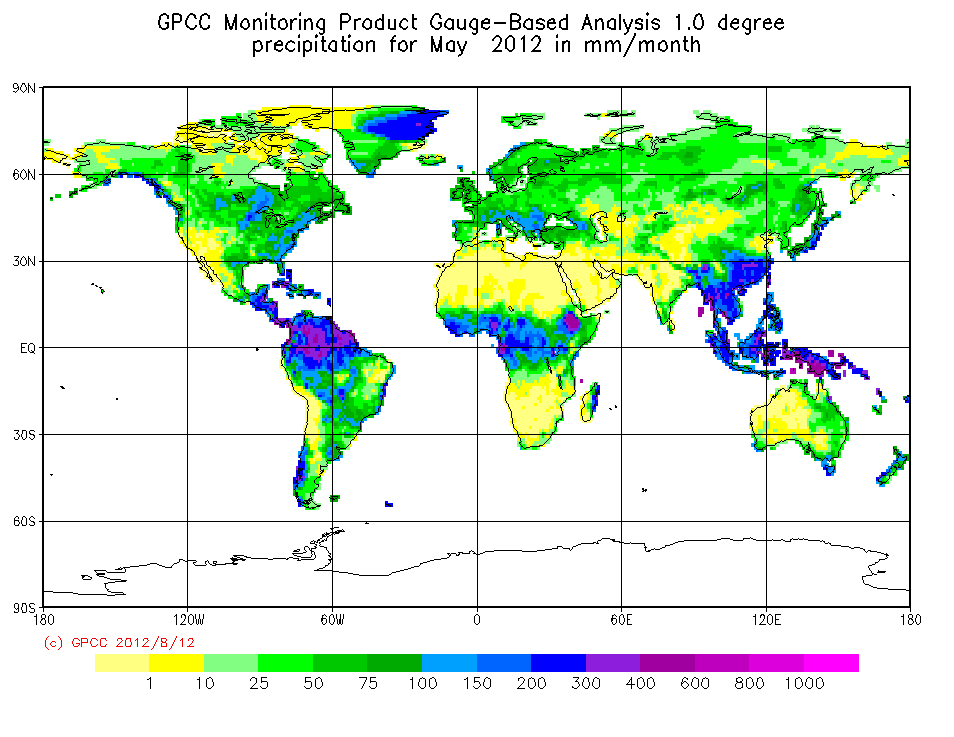
The GPCC provides gridded gauge-analysis products derived from quality controlled station data. Two products are for climate: (a) the Full Data Reanalysis Product (1901-2010) is recommended for global and regional water balance studies, calibration/validation of remote sensing based rainfall estimations and verification of numerical models, and (b) the VASClimO 50-Year Data Set which is for climate variability and trend studies. The products are not bias corrected for systematic gauge measuring errors. However, the GPCC provides estimates for that error as well as the number of gauges used on the grid.
Key Strengths
Large number of stations used; gauge network extends beyond GHCN
Key Limitations
Variable number of stations per grid over time can be a major inhomogeneity source.
Monitoring products are frequently updated but climate products are not
Expert Developer Guidance
The GPCC Full Data Reanalysis uses the complete GPCC station database (ca. 64.400 stations with at least 10 years of data) available at the time of analysis and therefore is recommended to be used for global and regional water balance studies, calibration/validation of remote sensing based rainfall estimations and verification of numerical models. When interpreting applications and assessments based on GPCC Full Data Reanalysis users should carefully take into account the number of stations available for a specific analysis grid in a specific month.
Cite this page
Acknowledgement of any material taken from or knowledge gained from this page is appreciated:
National Center for Atmospheric Research Staff (Eds). Last modified "The Climate Data Guide: GPCC: Global Precipitation Climatology Centre.” Retrieved from https://climatedataguide.ucar.edu/climate-data/gpcc-global-precipitation-climatology-centre on 2026-01-08.
Citation of datasets is separate and should be done according to the data providers' instructions. If known to us, data citation instructions are given in the Data Access section, above.
Acknowledgement of the Climate Data Guide project is also appreciated:
Schneider, D. P., C. Deser, J. Fasullo, and K. E. Trenberth, 2013: Climate Data Guide Spurs Discovery and Understanding. Eos Trans. AGU, 94, 121–122, https://doi.org/10.1002/2013eo130001
Key Figures
Other Information
- Rudolf, B., A. Becker, U. Schneider, A. Meyer-Christoffer, M. Ziese, 2010: GPCC Status Report December 2010. GPCC, December 2010, 7pp.
- A New Monthly Precipitation Climatology for the Global Land Areas for the Period 1951 to 2000
- U. Schneider, T. Fuchs, A. Meyer-Christoffer and B. Rudolf (2008): Global Precipitation Analysis Products of the GPCC. Global Precipitation Climatology Centre (GPCC), DWD, Internet Publikation, 1-12.
- Becher, A et al (2013): A description of the global land-surface precipitation data products of the Global Precipitation Climatology Centre with sample applications including centennial (trend) analysis from 1901–present. Earth Syst. Sci. Data, 5, 71-99
- Schneider, U. et al (2011): GPCC Full Data Reanalysis Version 6.0 at 0.5°: Monthly Land-Surface Precipitation from Rain-Gauges built on GTS-based and Historic Data.
- Schneider, U. et al (2013): GPCC's new land surface precipitation climatology based on quality-controlled in situ data and its role in quantifying the global water cycle. Theoretical and Applied Climatology
